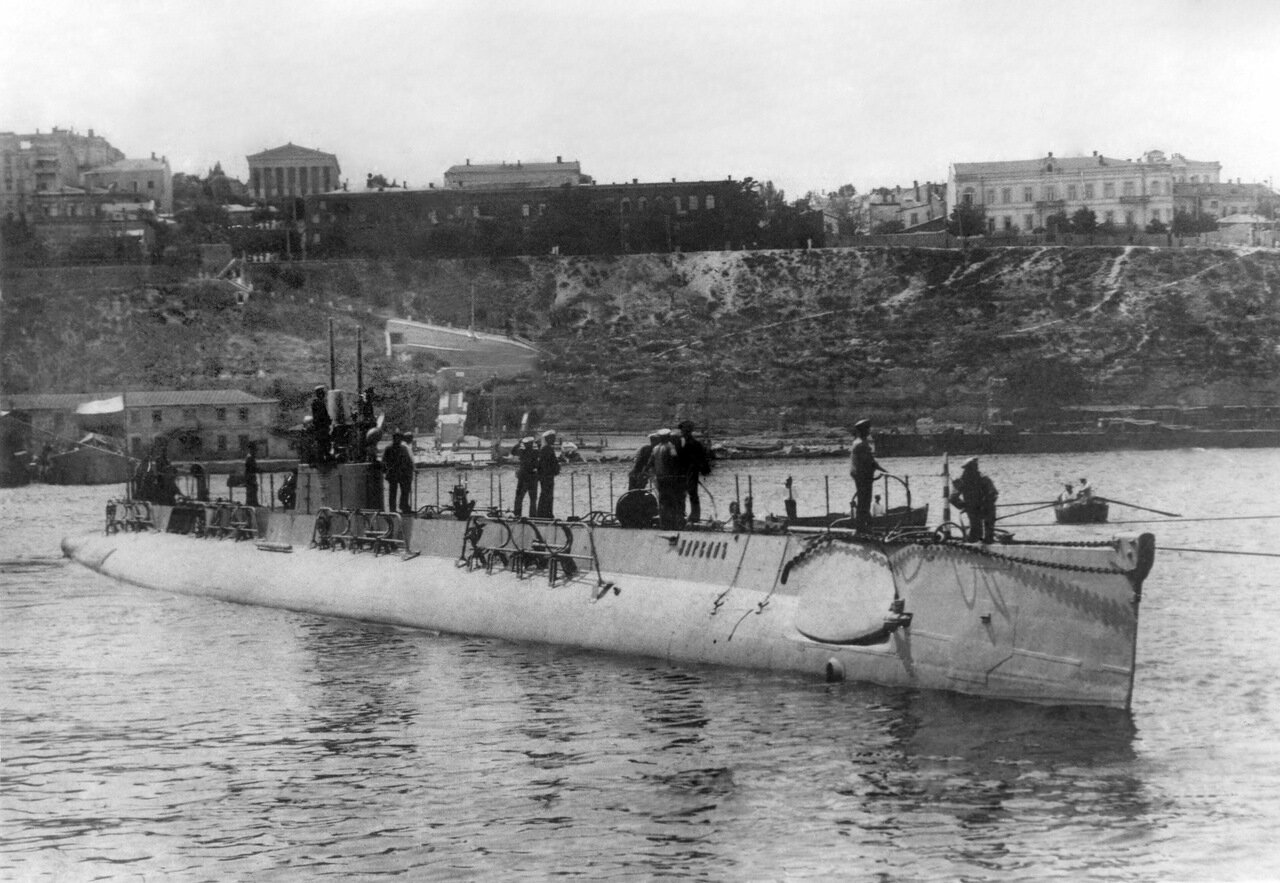Russian Narval-class submarine on:
[Wikipedia]
[Google]
[Amazon]
The ''Narval'' class were a group of submarines built for the

Imperial Russian Navy
The Imperial Russian Navy () operated as the navy of the Russian Tsardom and later the Russian Empire from 1696 to 1917. Formally established in 1696, it lasted until dissolved in the wake of the February Revolution of 1917. It developed from a ...
. They were designed by the Electric Boat Company and ordered in the 1911 programme as the "Holland 31A" design. The Narval class had advanced features including watertight bulkheads, a crash diving tank and gravitationally filled ballast tanks which did not feature in contemporary Russian-designed boats. The boats were well regarded by the Russian Navy and served in the Black Sea Fleet
Chernomorskiy flot
, image = Great emblem of the Black Sea fleet.svg
, image_size = 150px
, caption = Great emblem of the Black Sea fleet
, dates = May 13, ...
during World War I
World War I (28 July 1914 11 November 1918), often abbreviated as WWI, was one of the deadliest global conflicts in history. Belligerents included much of Europe, the Russian Empire, the United States, and the Ottoman Empire, with fightin ...
, during which they sank 8 merchant ships and 74 coastal vessels.
At the end of 1917, the submarines were transferred to the reserve. The submarines were scuttled by British forces in April 1919 near Sevastopol
Sevastopol (; uk, Севасто́поль, Sevastópolʹ, ; gkm, Σεβαστούπολις, Sevastoúpolis, ; crh, Акъя́р, Aqyár, ), sometimes written Sebastopol, is the largest city in Crimea, and a major port on the Black Sea ...
.
Ships
Three submarines were built by Nikolayev Dockyard. ''Kit'' was raised byEPRON
EPRON, russian: Экспедиция подводных работ особого назначения (ЭПРОН) "Special Expedition for Underwater Works" —Special-Purpose Underwater Rescue Party, was a government agency of the Soviet Union ...
in 1934, but the hulls of the other two boats remain on the bottom in the place they were scuttled. The whereabouts of ''Narval'' was unknown until October 2014, though some historians believe it was virtually discovered by the Soviet underwater laboratory ''Bentos-300'' back in 1980. In June 2018, a joint expedition of the Russian Geographical Society
The Russian Geographical Society (russian: Ру́сское географи́ческое о́бщество «РГО»), or RGO, is a learned society based in Saint Petersburg, Russia. It promotes geography, exploration and nature protection wi ...
's Sevastopol branch, the Ministry of Defence
{{unsourced, date=February 2021
A ministry of defence or defense (see spelling differences), also known as a department of defence or defense, is an often-used name for the part of a government responsible for matters of defence, found in states ...
and Sevastopol State University was undertaken to examine the wreck of five submarines, including ''Narval'' and ''Kashalot'', by using a remotely operated underwater vehicle
A remotely operated underwater vehicle (technically ROUV or just ROV) is a tethered underwater mobile device, commonly called ''underwater robot''.
Definition
This meaning is different from remote control vehicles operating on land or in the ai ...
. It was reported in May 2019 that the wreck site is to be listed as a cultural heritage.

References
Further reading
* * * {{DEFAULTSORT:Narval class submarine, Russian Submarine classes Submarines of the Imperial Russian Navy